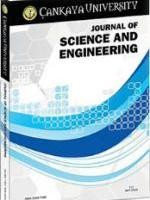Histopathology of the Tissue of a Tubificid Worm Limnodrilus hoffmeisteri Exposed to Cadmium
Histopathology of the Tissue of a Tubificid Worm Limnodrilus hoffmeisteri Exposed to Cadmium
Heavy metal, cadmium, histopathology, oligochaeta,
___
- [1] J. R. Jennings and P. S. Rainbow, Studies on the uptake of cadmium by the crab Carcinus maenas in the laboratory. 1. Accumulation from seawater and a food source, Marine Biology 50 (1979), 131–139.
- [2] R. Najle, M. Elissondo, S. Gentile, M. Gentile, G. Vacarezza and H. Solana, Histopathology of the digestive gland of an Antarctic limpet exposed to cadmium, The Science of the Total Environment 247 (2000), 263–268.
- [3] G. A. Burton, Assessing contaminated aquatic sediments, Environmental Science & Technology 26 (1992), 1862–1863.
- [4] R. Dallinger, F. Prosi, H. Segner and H. Back, Contaminated food and uptake of heavy metals by fish: a review and a proposal for further research, Oecologia 73 (1987), 91–98.
- [5] K. R. Timmermans, E. Spijkerman, M. Tonkes and H. Govers, Cadmium and zinc uptake by two species of aquatic invertebrate predators from dietary and aqueous sources, Canadian Journal of Fisheries and Aquatic Sciences 49 (1992), 655–662.
- [6] A. Z. Mason, The Uptake, Accumulation and Excretion of Metals by the Marine Prosobranch Gastropod Mollusc Littorina Littorea (L.), PhD. Thesis, University of Wales (U.C.N.W., Bangor: Marine Science), 1983.
- [7] I. A. Marig´omez, M. P. Cajaraville and E. Angulo, Histopathology of digestive gland complex of the marine prosobranch Littorina littorea exposed to cadmium, Diseases of Aquatic Organisms 9 (1990), 229–238.
- [8] W. J. G. M. Peijnenburg, R. Baerselman, A. C. de Groot, T. Jager, L. Posthuma and R. P. M. Van Veen, Relating environmental availability to bioavailability: Soil-type-dependent metal accumulation in the oligochaete Eisenia andrei, Ecotoxicology and Environmental Safety 44 (1999), 294–310.
- [9] L. Ramos, M. J. Gonz´alez and L. M. Hern´andez, Sequential extraction of copper, lead, cadmium, and zinc in sediments from Ebro River (Spain): Relationship with levels detected in earthworms, Bulletin of Environmental Contamination and Toxicology 62 (1999), 301–308
- Yayın Aralığı: Yılda 2 Sayı
- Başlangıç: 2009
- Yayıncı: Çankaya Üniversitesi
N-Fractional Calculus Operator Nη Method Applied to a Gegenbauer Differential Equation
Stochastic Stability in Fuzzy Dynamical Systems
Seyyed A. AHMADİ, Mohammad R. MOLAEİ
Histopathology of the Tissue of a Tubificid Worm Limnodrilus hoffmeisteri Exposed to Cadmium
Mediha CANBEK, Ahmet ÖZEN, Nihal YERLİ, Mustafa UYANOĞLU, Naime ARSLAN
